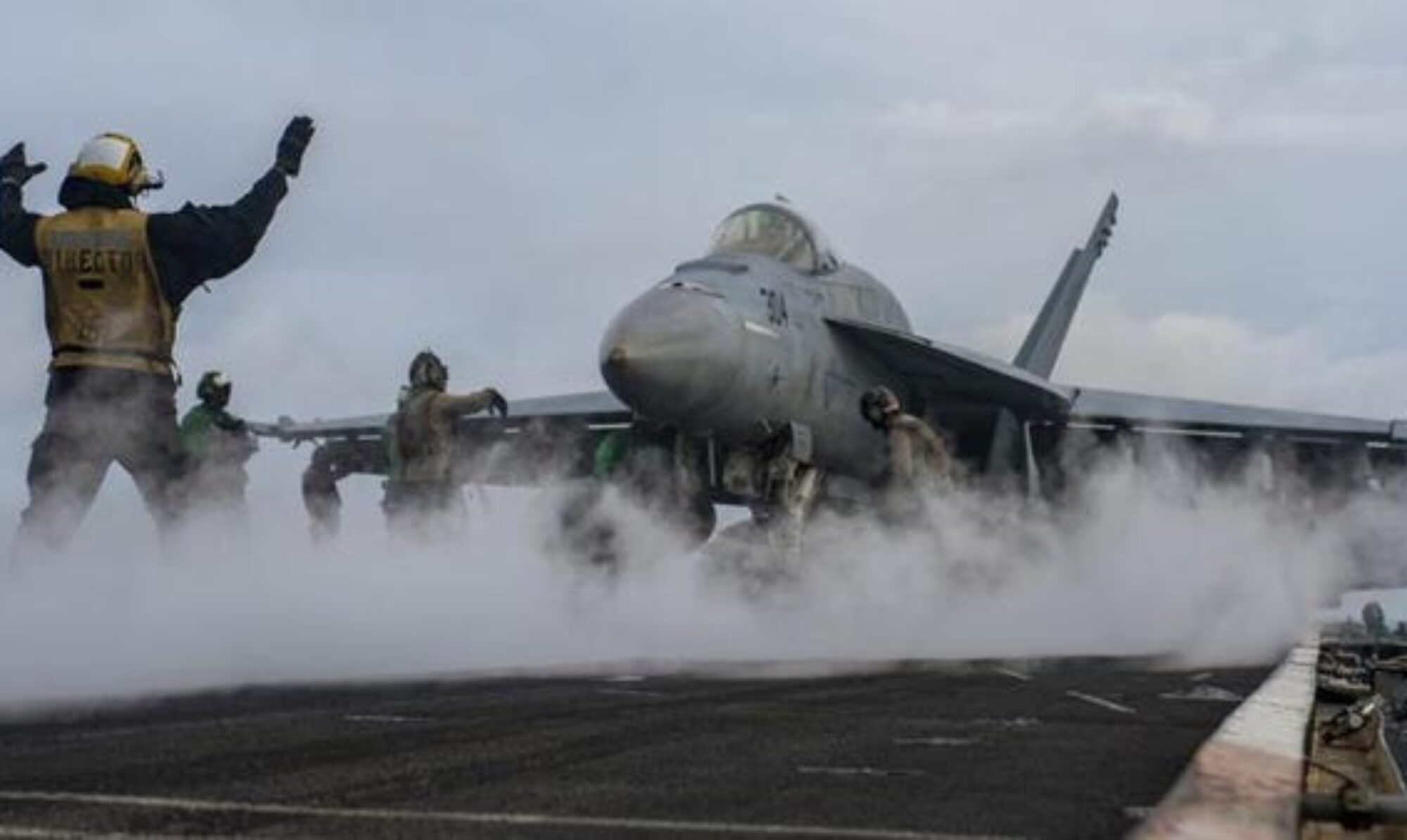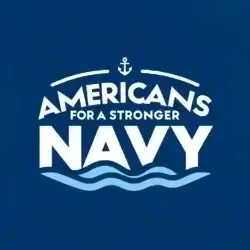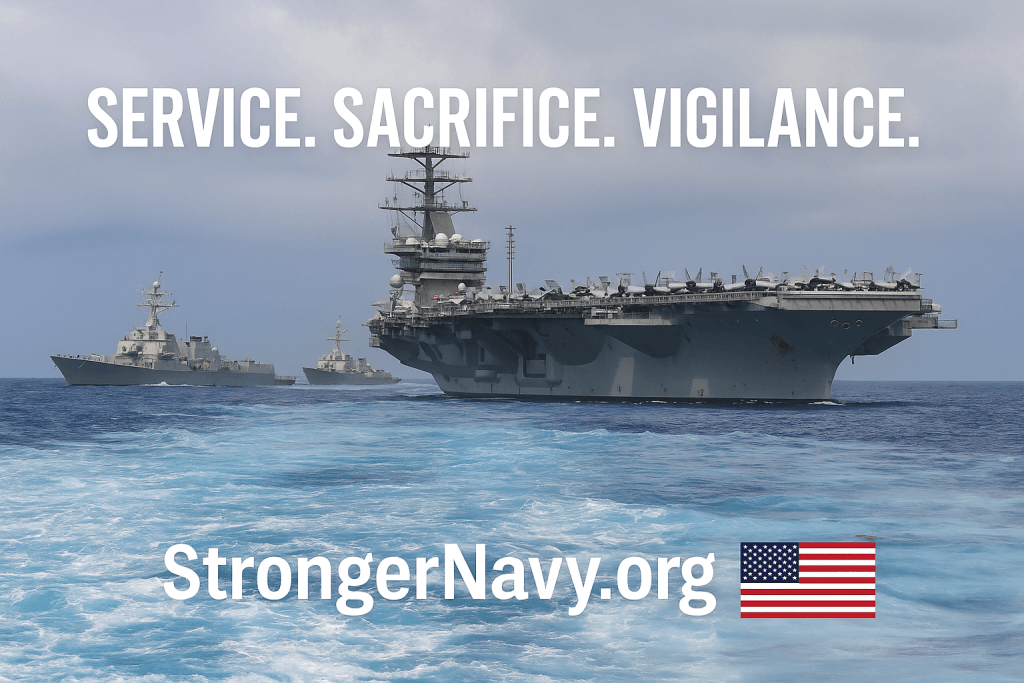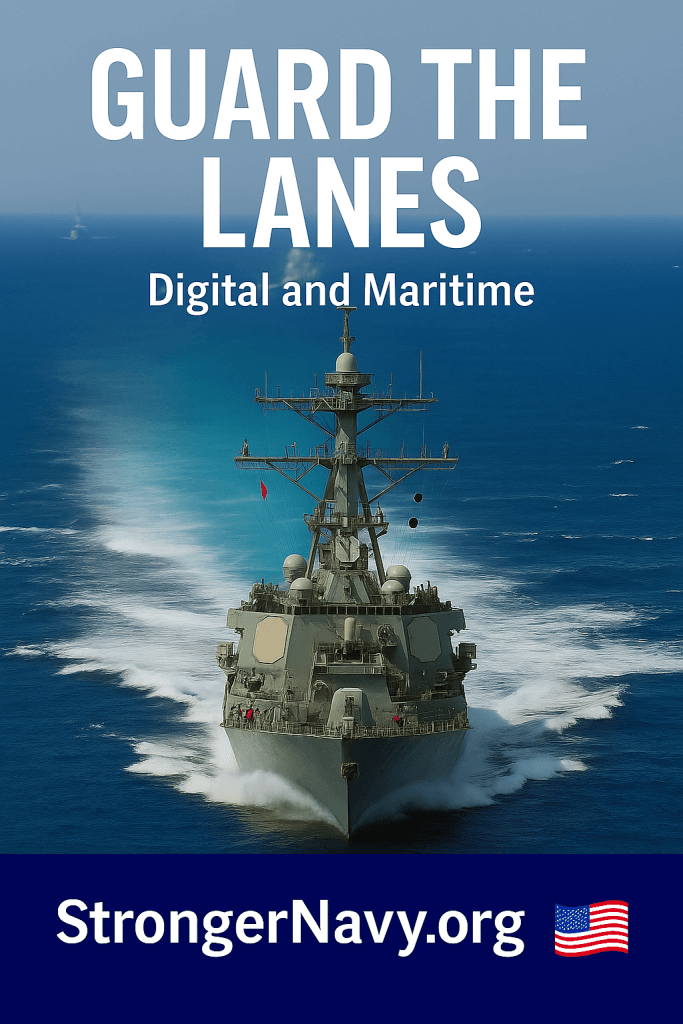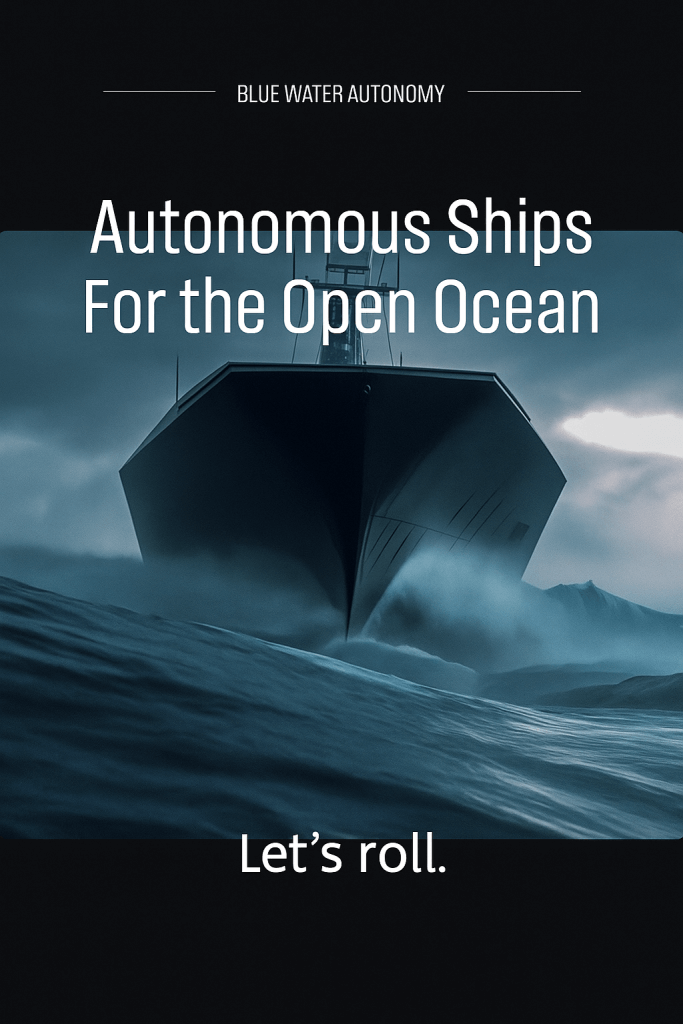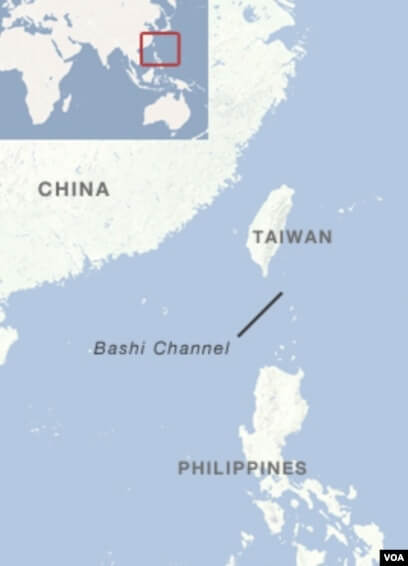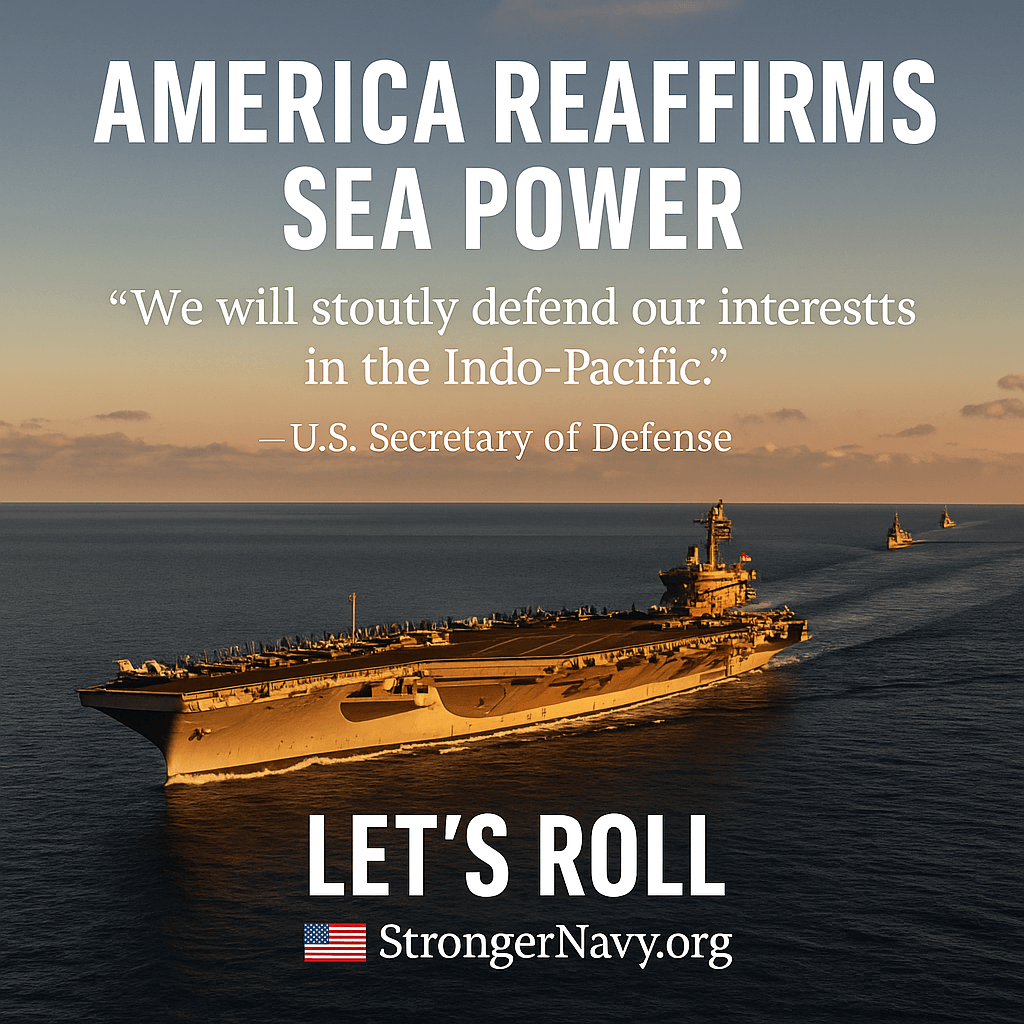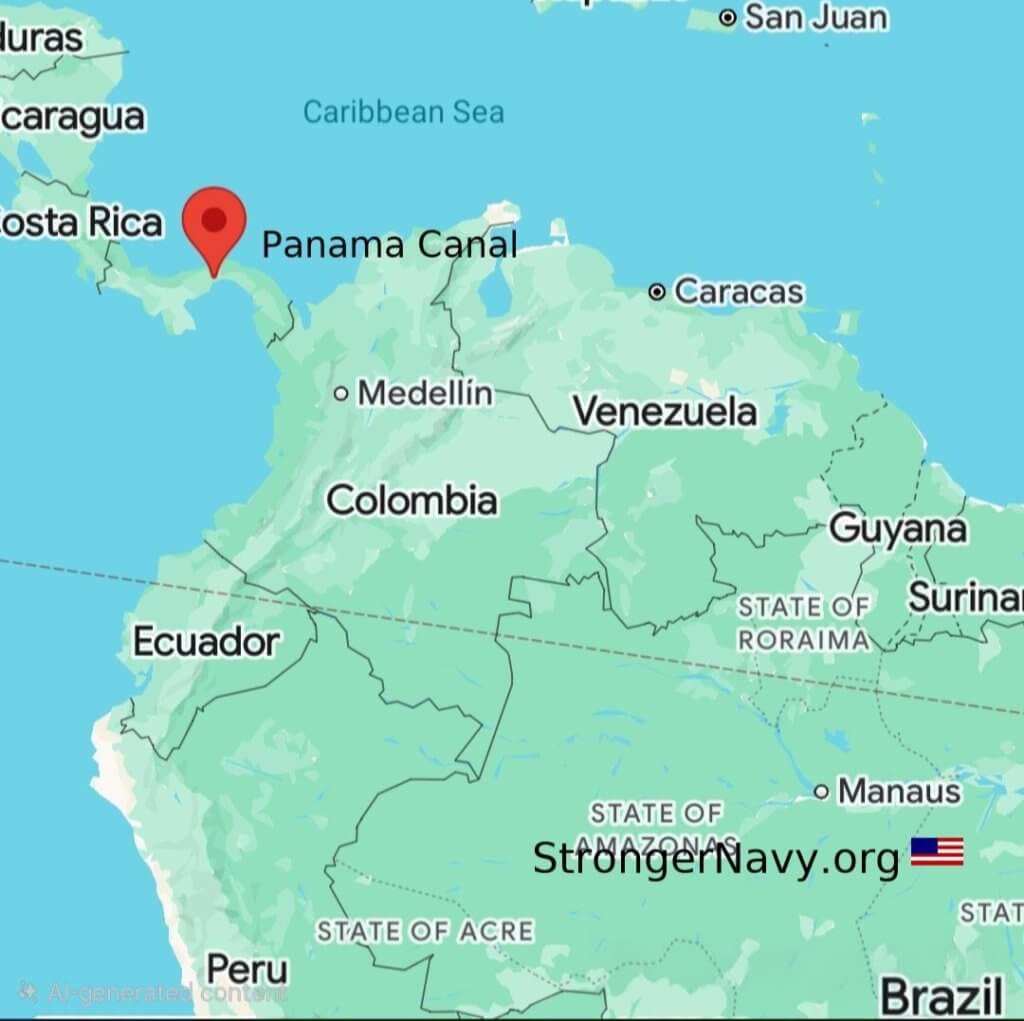by Bill Cullifer, founder, Americans for a Stronger Navy.
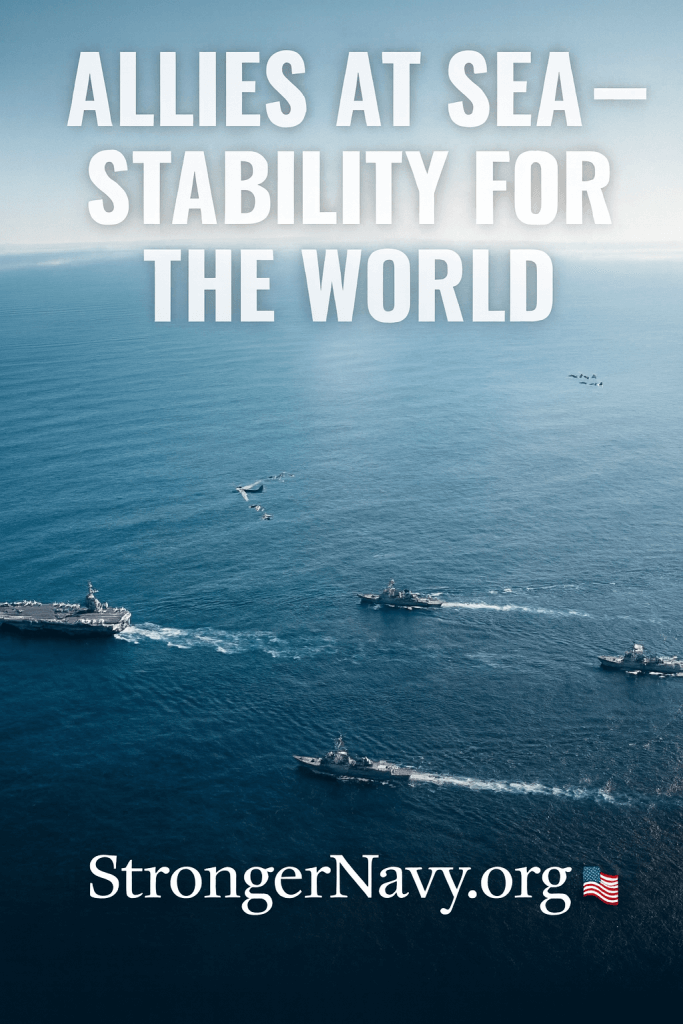
For the past two years, I’ve been writing, listening, and learning from shipmates, analysts, and experts across the country. My message has stayed the same: the United States is facing a maritime crisis that threatens our economic strength, our national security, and our ability to deter aggression in the years ahead. I don’t say that lightly. I say it as a former destroyer sailor who knows how much we depend on strong ships, trained crews, and an industrial base that supports both.
That’s why Jim Vinoski’s analysis in Forbes matters. Vinoski isn’t a political pundit or a defense insider. He’s a manufacturing executive turned industry journalist who has spent a career inside the real economy—factory floors, production lines, supply chains, and the industrial workforce that keeps America moving. When someone with his background says, “America’s shipbuilding has collapsed,” it hits with credibility.
Vinoski highlights the uncomfortable truth: America once produced nearly 90 percent of the world’s ships. Today, we produce just 0.2 percent. Fewer than five oceangoing vessels a year. China produces more than 1,000. That gap alone should concern every American, because the global economy—and our national security—run on ships.
His piece also includes powerful insights from Captain Brent Sadler, U.S. Navy (Retired), whose work many of you know. Sadler has been sounding the alarm for years, and he doesn’t sugarcoat the problem. Decades of underinvestment, deferred maintenance, and industrial decline have left us with a shrinking fleet, an overworked Navy, and an industrial base that can’t respond at the speed the world now demands.
Sadler warns that without a major shift in national focus, we are waving “our weaknesses like red bloody meat in front of a very hungry lion.” It’s a blunt truth in a moment that requires blunt truth. China’s naval buildup is accelerating. Russia is becoming more active globally. And while our sailors continue to perform miracles at sea, the system behind them is stretched to the breaking point.
There is good news, too. Vinoski points to places like the Port of Brownsville—large, underdeveloped, and full of potential for new maritime industry—and to allied partners like Hanwha Philly Shipyard, bringing advanced shipbuilding technology and workforce development from South Korea. These are the green shoots we must build on if we’re serious about turning this crisis into a recovery.
We can’t afford to be passive. Not anymore. The American people deserve to know the truth. And we need their engagement, their voices, and their insistence that the Navy matters—not as an abstract budget line, but as the backbone of the global system that keeps food on our shelves, goods in our stores, fuel in our tanks, and our allies secure.
This is why Americans for a Stronger Navy exists. To educate. To connect the dots. To rally civic engagement around the simple idea that America cannot remain a global leader without maritime strength.
Key Takeaways
America’s shipbuilding capacity has collapsed. Less than five major vessels a year is not sustainable for a global superpower.
China is outbuilding us by orders of magnitude. Over 1,000 ships a year, with more coming.
The U.S. Navy fleet is shrinking. We stand at 296 ships today and are projected to fall to around 280 by 2027—the lowest point in modern history.
Experts now say we need 575 ships to meet global demands. That’s far beyond the old 355-ship target.
Industrial capacity and workforce shortages are the limiting factors. Not demand. Not missions. Capacity.
Why Americans Should Care
The world’s economy runs on the ocean. Ninety percent of global trade moves by sea. If China dominates global shipping, global shipbuilding, and global sea lanes, then China dominates the flow of goods that power American life.
Everything from fuel and fertilizer to electronics and food relies on a secure maritime system. Without a strong Navy to safeguard those lanes, and without the shipbuilding base to sustain it, Americans become more vulnerable to global shocks and geopolitical manipulation.
A stronger Navy isn’t just a military issue. It’s a kitchen-table issue.
Implications for the Navy
A shrinking fleet means fewer ships to deter adversaries, fewer ships to respond to crises, and fewer ships to maintain persistent presence where it matters. Readiness suffers. Sailors carry the burden. And adversaries see opportunity.
Without more ships—and the industrial power to build and maintain them—the Navy cannot meet its responsibilities, no matter how hard our sailors work.
Implications for Our Allies
Our allies depend on the United States to keep sea lanes open, stabilize regions, and deter aggression. When we fall behind in shipbuilding, they feel the pressure too.
The bright spot is that allies like South Korea, Japan, and Greece bring enormous shipbuilding capability. Partnerships like Hanwha Philly Shipyard show what’s possible when we combine American needs with allied industrial strength.
Allied cooperation must be part of the solution.
The Path Forward
America must rebuild shipbuilding capacity, expand the maritime workforce, modernize shipyards, and accelerate public-private partnerships. We must also restore awareness—because no strategy succeeds without public support.
This is not about panic. It’s about preparation. It’s about leadership. And it’s about bringing Americans back into the conversation about what keeps their country strong.
That’s why we launched Charting the Course: Voices That Matter — a 24-part educational series breaking down how we got here, what went wrong, and what must happen next. Our goal is simple: educate the public, connect the dots, and build the support needed to close the readiness gap before it’s too late.
Let’s roll.
